Student Blog

Reflections From My Residency: When did we realize that humans and animals have an emotional bond? ⟩
February 12, 2019, by Antonietta
In today’s culture, where people dress their dogs up for Halloween and get baby strollers for their cats, this may seem like a silly question . . . but when did we realize that humans can have an emotional bond with animals? The debate in “pop culture” can be traced back to 1765 when Jean-Baptiste Greuze completed an intricate portrait in oil paints of a young woman and a dead bird (see below). Each component of this painting isn’t odd for the time period, but what stirred the pot was the young woman’s expression. You can see she looks devastated. From our modern perspective, it is obvious this because her darling pet bird died, but in the mid 1700s it was not part of the zeitgeist to think animals were something you could have an emotional bond with. Jean-Baptiste Greuze observed the people around him and started to challenge this assumption with his painting.
![Greuze, J. (1765). A Girl with a Dead Canary [Painting]. Scottish National Gallery, Edinburgh, Scotland.](https://chan.usc.edu/uploads/student-blogs/antonietta-animals-humans-emotional-bond-feb2019-1.jpg)
Greuze, J. (1765). A Girl with a Dead Canary [Painting]. Scottish National Gallery, Edinburgh, Scotland.
This conversation swirled around for about a hundred years and in 1890 Paul Meyerheim added to the next iteration. He painted “The Jealous Lioness” (see below). His challenge was not only that humans and animals can have an emotional bond, but that animals actually have their own emotions. And not just simple emotions like happiness and boredom, but complex ones like jealousy. This painting illustrates the beginning of the big shift to the modern perspective of how we think about animals.
![Meyerheim, P. (1885-1890). The Jealous Lioness [Painting]. Städelscher Museums-Verein, Frankfurt, Germany.](https://chan.usc.edu/uploads/student-blogs/antonietta-animals-humans-emotional-bond-feb2019-2.jpg)
Meyerheim, P. (1885-1890). The Jealous Lioness [Painting]. Städelscher Museums-Verein, Frankfurt, Germany.
Ok, so how do I know all of this? It started one night during a conversation over dinner with my dad. I was feeling pretty beat from work and Papa asked me about my day. We had had a student at The Children’s Ranch who was struggling. He loved our animals but was not able to keep his body calm and safe around them. We had been using a tool with him, a modified zones of regulation meter, to check in with how he was feeling. It was also intended to teach him how to observe our horses and chickens to see how they were feeling. I’d brought home one of our pocket sized, laminated meters by accident and so I pulled it out and showed my dad (see below). He looked quizzical . . . “but if you’re starting the discussion with the animal’s emotions, then why are the faces emoji’s? Why not have drawings of what the horses actually look like when their emotions change?”
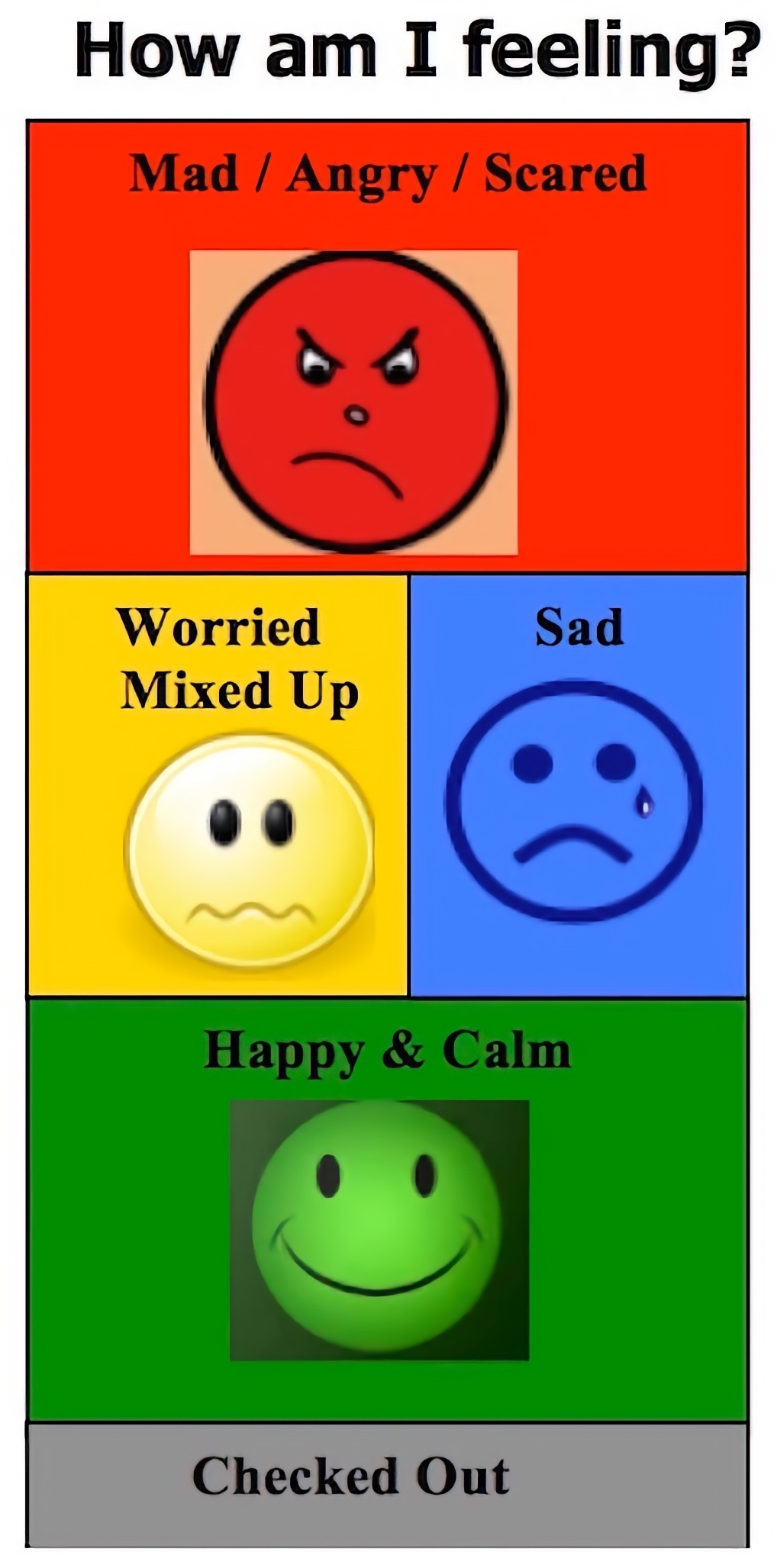
A project was born! My dad (Carmine Iannaccone) is an artist and professor in the Master of Fine Art program at Claremont Graduate University. He is the one who taught me about the two paintings in the beginning of this blog because visual culture is something he studies and is a theme he has been creating artwork around for years. He has this amazing ability to connect almost anything to visual culture, which makes our conversations fascinating and rich. So anyways, the project: a meter which features horses faces showing the different zones. Papa did the drawings, I collated and colored them in Photoshop and now we have a tool which is even more effective than the original (see below). Because humans undoubtedly do have a bond with animals, children are immediately fascinated by the horse meter. When I first show them the little card, they frequently take it right out of my hand to stare at the pictures . . . and then the questions about our horses start rolling in:
“What makes Dove sad?”
“How can I make Storm happy?”
“How can you tell that Pepper is scared?”
“Why is Cody so worried?”
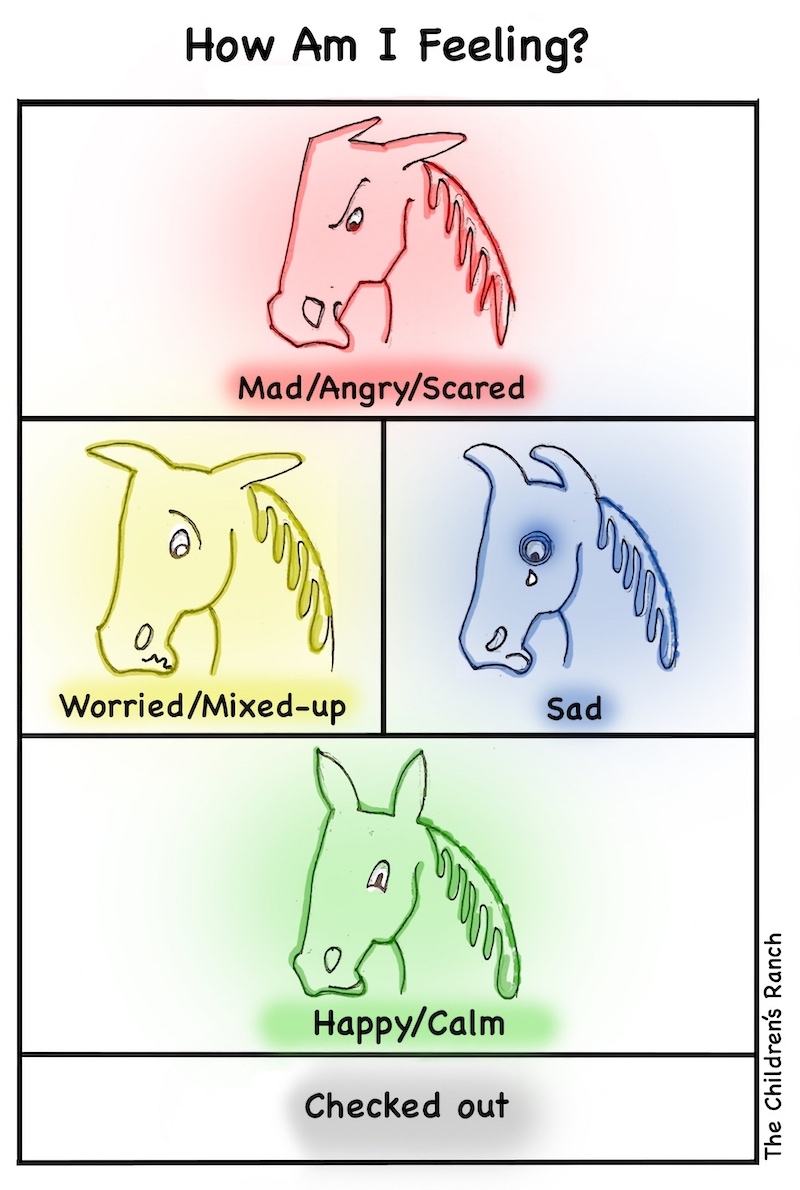
There is always buy-in. The meter flows naturally into and out of our conversations. It is a tool we use together to teach and learn about our animal companions. This collaboration with my dad continued. Inspired by the work of Greuze and Meyerheim (the painters I discussed above), he came to the Ranch every Friday for a semester . . . but more about that in my next post!
⋯

When you need supports: Ask for Help! ⟩
February 11, 2019, by Goeun
Everyone needs support when having a hard time. Especially as international students, it could be harder to find supports since we are far away from home. Before I came here, one concern that I had was where and how to get support as I don’t know anyone here and it was my first time coming to the US. I was worried about my English and I wasn’t confident whether I could do it well or not. However, since I started the Post-Professional Master’s program in the USC Chan Division of Occupational Science and Occupational Therapy, I’ve been supported by so many people and groups in school which I really appreciate.
Here are some resources where you can get help and supports when you need as an international student in the USC Chan Division of Occupational Science and Occupational Therapy.
1. Global Initiatives
When I think of supports as an international student, the first thing that came up in my mind is Global Initiatives. As its title represents, the Global Initiatives team supports international students in our Division to adapt to a new country as well as to help us academically. They’ve held Global Corner which we can join and have fun. Also, they have Academic Peer Mentors, International Student Mentorship Program and Study Hall which supports our academics and hear from previous students as well. In terms of Study Hall, Julianne, who is an Entry-Level Master’s student, help us with English when we’re having a hard time doing assignments or studying exams. I think it really helps us and makes us feel that we are being cared for.
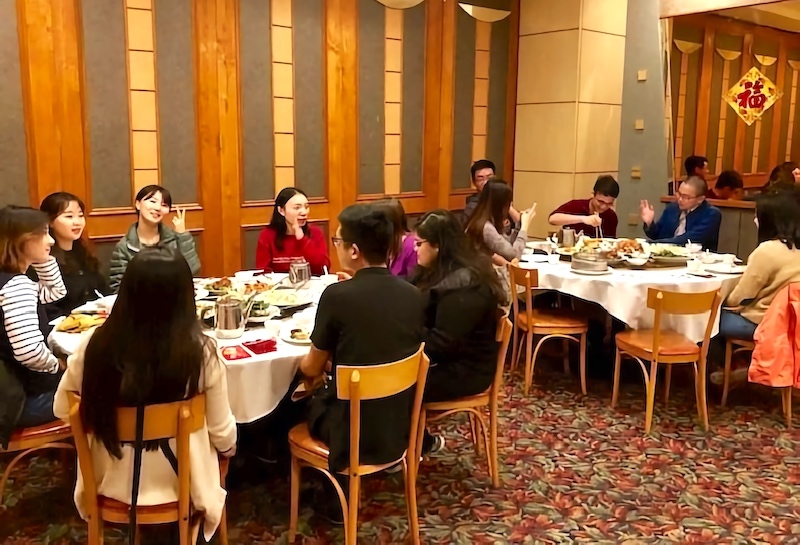
We had dinner to celebrate Lunar New Year altogether.
2. Faculty members
The Chan Division of Occupational Science and Occupational Therapy has more than a hundred faculty members. You’ll not have a chance to meet all of them, but during your program, you can get a lot of support from the faculty members. They help us not only academically, but also with other things. Dr. Blanche and Dr. Ochi, who are the program directors of the Post-Professional Master’s program, have been supporting in so many ways. We were invited to Dr. Blanche’s house for BBQ party in the first month of the program and Dr. Blanche and Dr. Ochi have been asking how have we been doing all the time. Also, Dr. Cermak, who was a professor from our program in the Fall semester, was supportive not only during the class but during the whole semester. I was surprised by how supportive they are and their willingness to help us. Also, when you have interests in some specific part, I’m sure that you can find experts and ask for advice in the Division.
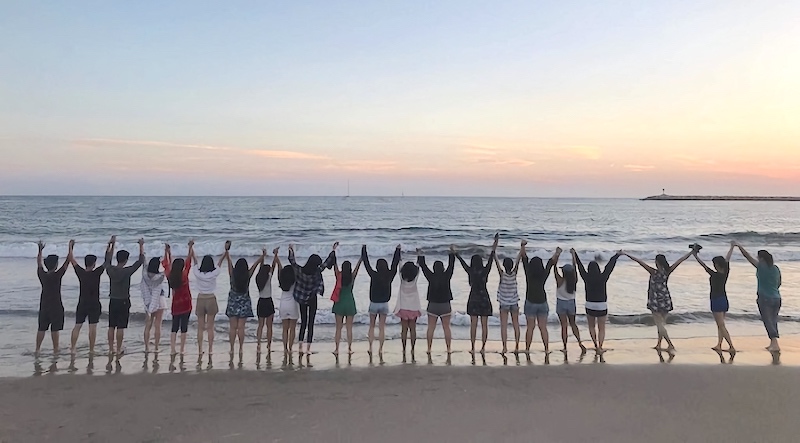
This is a picture from last semester when we went to Dr. Blanche’s house for BBQ Party.
3. Classmates
When you’re struggling with something, you may think that you’re the only person who has the problem. However, since all of your classmates from the Post-Professional Master’s program are mostly international students, they could have the same or similar problems that you have or you have been through. I was really nervous before I start the program, but once I met them in the orientation day, I could feel much better as all of my classmates were so kind and supportive. We had some group works in the Fall semester, and all of us were cooperative, helping each other. We also meet sometimes, hang out together. You can also learn so many things from different cultures to their clinical experiences as an occupational therapist in their countries. It has been really nice having them as my classmates and I’m sure if you come and start the program, your classmates will be too.

We went to Koreatown for dinner together.
4. Office of International Services (OIS)
OIS is one other support that you’ll need during your study in the U.S. Some things that you need to complete when you first come such as passport verification is done by OIS. Also, while studying, when you travel out of the States, you need OIS for a travel signature. When you’re about to graduate, you’ll need help to apply for OPT visa. Like I mentioned, OIS help us process our visa and stuff, and they have some events too like International Coffee Hour, Movie Night, and Intellectual Writing Session. You can also find some useful information on the website from broadly studying abroad to living in LA specifically.
I really appreciate their help and supports. This is one reason why I chose USC and I think it would have been more difficult studying and living in another country. Lastly, I’m also thankful for the Student Ambassadors and Admission Team since they’ve been supporting me adjust to this position.
⋯
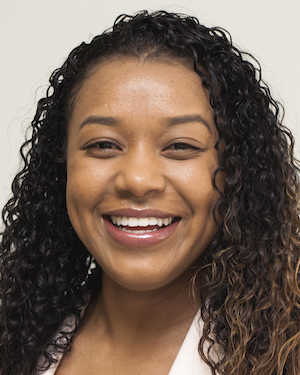
Black College Expo ⟩
February 5, 2019, by Serena
Increasing diversity within the OT profession at the Black College Expo!
What a great way to start off Black History Month! Last year I attended the 2018 Black College Expo, a couple of months ago I attended the Latino College Expo, and this past weekend I was at the 2019 Black College Expo! The annual event is held at the LA Convention Center to increase Black students’ awareness of and acceptance into higher education. It was an honor and joy to be able to mentor college, high school, middle school, and even elementary school students at such a life-changing and well put on event! So many incredible memories were made today, one of which I would love to share about a very bright 4th grader I met.
Future OT: At the age of 9
As I saw a little girl approach the USC OT booth, I immediately became very excited! I mean, I wish someone would have told me about OT while I was in elementary school. I asked her, “Do you know what Occupational Therapy is?” And she replied, “No.” So I then asked, “What do you like to do?” And she said, “I like to play on my iPad.” And I said “Well, if you were to get sick and not be able to play on your iPad then occupational therapists would help you play on your iPad.” She instantly grabbed an OT flyer and clipped an OT pin to her jacket.
After I gave her a more in depth description of OT, she left . . . and then quickly came back with her dad. By the end of the conversation we had planned for her to tour USC’s Health Science Campus to learn more about OT and the various fields of healthcare at the young age of 9!
Thank You!
I am so grateful for events such as the Black College Expo for allowing me to have these wonderful experiences and for having USC’s Occupational Therapy and Occupational Science program in attendance. The other OTs and student ambassador present made the experience that much more special by spreading their love for OT. By attending, we were of course having a great time and helping students find their passions, while addressing AOTA’s Vision 2025 by working on one of the 5 pillars, diversity.
Looking forward to next year!

USC occupational therapists and occupational therapy student ambassadors at the Black College Expo Event at the Los Angeles Convention Center. From left to right: Natasha Strickland (OTD student), Serena Hobson (me), Melissa Martinez (student ambassador), Diego Lopez (OTD student), and Laryssa Green (OTD student).
⋯
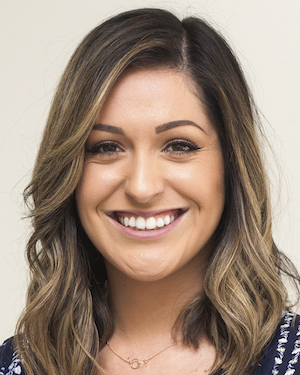
And So It Begins . . . One Last Time ⟩
February 4, 2019, by Melissa
Hey guys! This semester is now in full swing after a wonderful and restful break. For those of you that don’t know, our final semester in the program consists of a variety of electives that allow us to specialize/customize our academic experience! I talk about what that entails in one of my previous posts, so check it out if you’re interested in knowing more!
In this post, I want to talk a bit more in depth about the courses that I am taking, as I find it fascinating that we get this opportunity to customize our learning experience. Although I’ve found our curriculum thus far to be incredibly useful and important for our foundational knowledge of the profession, being able to take courses that I have chosen based on my own personal preferences is amazing! Although I am interested in both pediatrics and adult physical rehabilitation, I chose to focus more on my interests in physical rehab. Thus, I’m taking courses in Primary Care, Acute Care, Neurorehabilitation, and Dysphagia, in addition to our Leadership Capstone, and Occupational Science course. It is definitely a full course load, but I’m enjoying it tremendously.
My Primary Care and Acute Care courses have an additional clinical component in which we get to shadow an occupational therapist in those respective settings. For the Acute class, we get to go across the street to Keck Hospital, where we get to see some incredibly complex cases. The medical complexity surrounding some of the cases we see really adds an additional layer to the problem solving we have to do in our career as OTs. Learning about all of the medical conditions we might encounter in class, and then immediately seeing some of those conditions during our clinical experiences is pretty surreal, but it truly helps to solidify the information that we are learning.
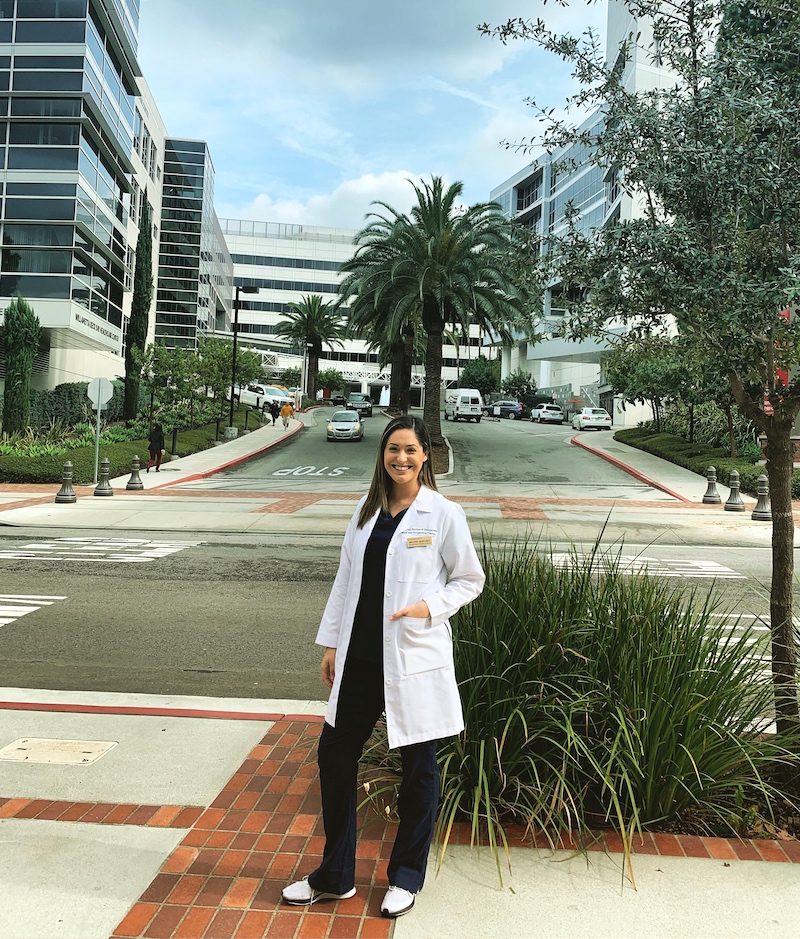
Occupational therapy in primary care is an emerging area for our profession, but it makes complete sense to have OTs in that setting! We learn all about the complexities associated with primary care — particularly surrounding the constantly changing policy and reimbursement challenges — and how that impacts our ability to be included as part of a patient’s care in that setting. For our clinical experiences, we have the option to shadow an OT providing direct care in a primary care setting, or to see what consultative OT looks like as well! Again, being able to apply what we’re learning in class to a real-life situation is amazing, and so helpful for my learning.
Although the Neurorehabilitation and Dysphagia courses don’t have a clinical component, there is still a lot of hands-on learning involved. In Neurorehab, we get to practice different assessments on each other, which is useful because a sense of mastery is necessary to execute these assessments well. In Dysphagia, we learn all about the anatomy associated with swallowing, and also practice swallowing assessments on each other to aid in our knowledge. Another cool thing about the Dysphagia course is that the hours in the course count towards our certification in that area! There is a certain amount of hours that have to be completed as part of that certification, therefore it’s great that we get a head start.
In addition to all of the exciting things going on related to my clinical experiences and electives, I get to look forward to completing my externship in March, welcoming the incoming class in April, and of course graduation in May! I had heard from other students that the Spring semester is a whirlwind that goes by very quickly, and now I definitely know what they mean! If you have any questions about the elective process, any of the specific course, or anything about the program in general, feel free to reach out!
⋯
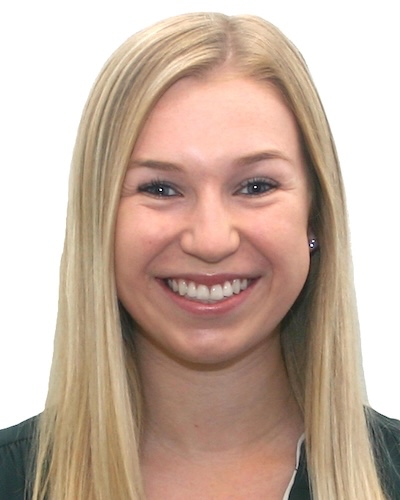
3 Ways to Pursue OT as an Undergrad ⟩
February 4, 2019, by Jessica P.
As many of you know, to practice as an occupational therapist in the United States you need a master’s degree. So that leaves a lot of people wondering — how do I get involved as an undergrad to prepare myself to become an occupational therapist? At USC as an undergrad, there are many ways to pursue occupational therapy from the minute you step on campus as a freshman:
1. Major in Occupational Therapy
If you know as a high school student applying to college, you want to pursue occupational therapy as a career then our Bachelor to Master’s (BS-MA) in Occupational Therapy is the major for you! The accelerated BS-MA program is a program where you get your undergrad and master’s degrees in just 5 years, instead of the traditional 6 years. The program follows a 3 + 2 format where your first 3 years you complete your undergrad courses and the last 2 years you complete your master’s courses.

During your undergrad years, you complete pre-professional courses as well as general education courses that all USC students take. Many students wonder if they can still have the “typical” college experience while being in an accelerated program, and let me tell you — you definitely can! As a BS-MA student, I was able to still take courses abroad, pick up a minor, while also participating in Greek life and student organizations.
2. Minor in Occupational Science
If you are an undergrad at USC, but aren’t already majoring in Occupational Therapy, you can join our amazing Occupational Science minor. Occupational Science was founded at USC in 1989. The OS minor classes are designed to complement any major and enhance students’ understanding of occupations, the things we do every day that occupy our time. There are students who are in a variety of majors such as accounting, chemistry, and theater, in addition to students who are planning on pursuing occupational therapy as their career.
There are classes like OT 310: Creativity Workshop where you get to explore your own creativity, OT 340: Occupational Foundations of Human-Animal Interaction which focuses on how animals contribute to human health, OT 350: Disability, Occupations, and the Health Care System where you learn about occupational opportunities and barriers in the health care system, and many more. Requiring only 20 units, the OS minor is flexible to fit into any undergrad’s schedule and provides classes that are hands-on and fun!
3. Join the Pre-OT Club
The Pre-OT club is a great way USC undergrads interested in occupational therapy can get involved. The club frequently has speakers come to present on topics such as neurodiversity, graduate admissions, and the health care field in general. They also hold site visits in the Los Angeles area to see various areas of practice and shadow clinicians.
No matter where you are on your path to pursue occupational therapy, USC has ways for you to explore whether this is the right field for you.
⋯





